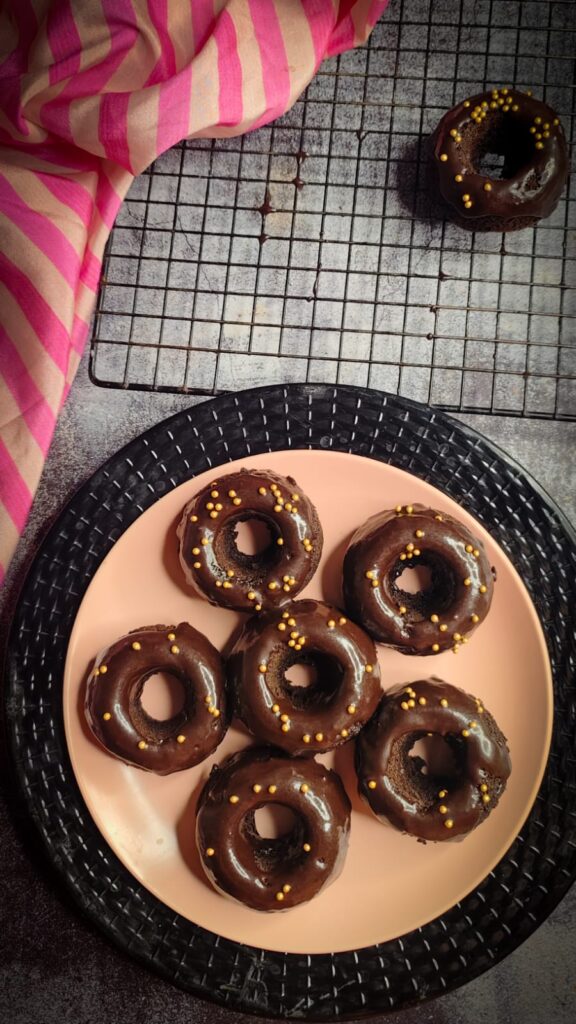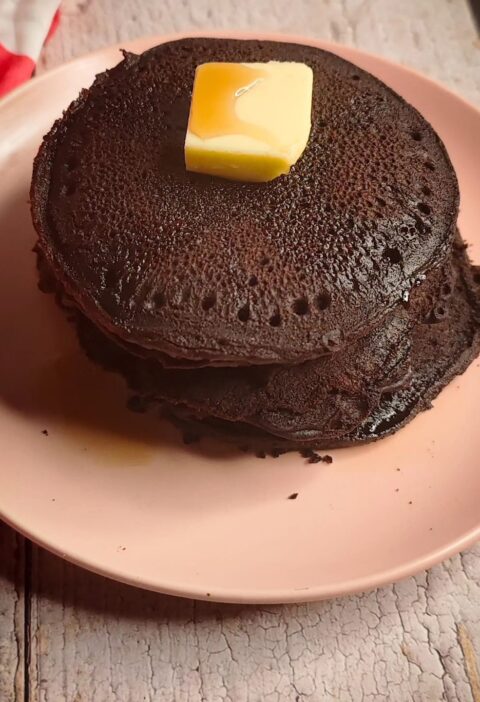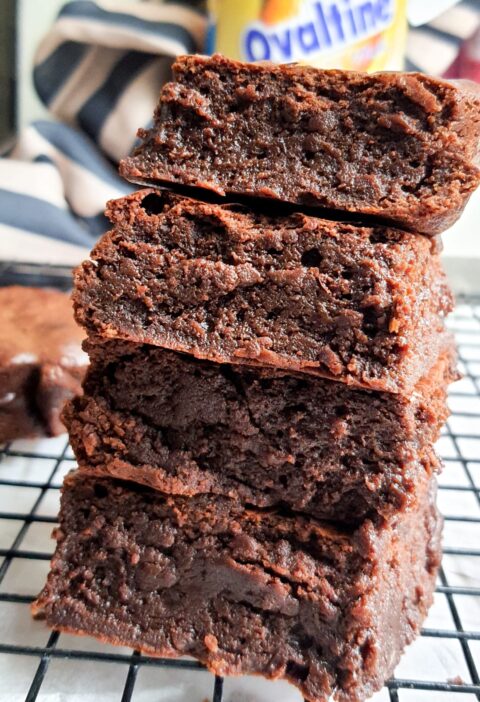
Microwave Baking is a method that is easy but a lot of us don’t know how to use it. It’s simple enough but we keep thinking that baking is only possible if we have an oven. I am here to bust that myth. Baking is possible in a regular microwave and is also possible in a microwave that provides a convection mode. Baking in a microwave can offer several advantages some are listed below
Why Bake in a Microwave?
Baking in the microwave can offer several advantages :
- Convenience: One of the biggest advantages of microwave baking is how incredibly convenient and time-saving it is. Unlike traditional oven baking, where there is preheating and longer cooking times, microwave cakes can be ready in a matter of minutes. They are quick easy and fuss-free. This makes it ideal for quick desserts or when you have limited time or access to an oven.
- Energy efficiency: Microwaves are generally more energy-efficient than ovens. Ovens are bulky and have more energy consumption. Baking a small cake in a microwave can save energy compared to heating up a large oven for a single dessert. If you’re conscious about reducing your energy consumption, microwave baking can be a viable option.
- Small portions: Microwave cakes are typically made in smaller portions, such as individual servings in mugs or small bowls. This is ideal and best if you’re baking for one or want to control portion sizes. It also has room for customization and personalization of each cake, as you can add different mix-ins or flavors to individual servings.
- Beginner-friendly: The fact that baking in a microwave is kid friendly ( under the guidance of an adult) as well as beginner friendly makes it a great choice. Baking in a microwave is less scary for beginners or those who are new to the art of baking. The process is very simple, and microwave cakes tend to be forgiving, as they cook quickly and don’t require precise temperature control like oven baking.
- Heat-sensitive ingredients: Some recipes, especially those that use delicate or heat-sensitive ingredients like chocolate or custards, can benefit from microwave baking. The controlled and quick cooking process of a microwave can help preserve the texture of these ingredients, avoiding overcooking or burning.
- Summer baking: During hot summer months, turning on the oven can heat up the kitchen and make it uncomfortable. Microwave baking keeps the heat low and the kitchen is much cooler.
- Dorm rooms or limited kitchen access: Microwave baking is popular among college students or individuals with limited kitchen facilities, such as those living in dorm rooms or small apartments. It allows them to enjoy homemade baked goods without requiring a full-size oven.
Some Important Questions Answered
- The most popular question I get asked is can you bake a cake in the microwave?
- Yes, you can bake a cake in the microwave either in the regular microwave or a microwave having a convection mode. However, it’s important to note that the texture and outcome of a microwaved cake may be different from a traditionally baked cake. Microwaves cook food by emitting electromagnetic waves that excite water molecules, which generate heat and cook the food. But the texture of the cake baked in a convection mode microwave will be closer to a cake baked in an oven.
- Also, another common question asked is can cake batter be cooked/baked in a microwave/ convection?
- Yes, cake batter is cooked/baked in a microwave oven. You need the right moulds/containers which are microwave safe and also monitor the doneness of the batter with the toothpick test. Don’t leave your baked cake in the microwave as the cake will dry up.
- How long does it take for a cake to bake in a microwave?
- The cooking time for a cake in a microwave can vary depending on the wattage of your microwave and the size of the cake. Typically, microwave cakes cook much faster than oven-baked cakes.
Do you need a convection oven to bake a cake?
No, a convection microwave is not necessary for baking a cake. While a convection microwave offers additional features and benefits, such as faster and more even cooking, it is not a requirement for baking a cake in the microwave.
A regular microwave can still be used to bake cakes effectively. The key is to adjust the cooking time and power levels based on the wattage of your microwave and closely monitor the cake as it cooks. By using shorter intervals and performing the toothpick test to check for doneness, you can achieve good results with a standard microwave.
However, if you have a convection microwave, it can offer some advantages for baking. Convection microwaves have a built-in fan and heating element that circulate hot air throughout the cavity, resulting in more even cooking and browning. This can help produce better texture and color in your baked goods.
Convection microwaves also provide more precise temperature control and typically offer baking and roasting modes, allowing you to set specific temperatures for your recipes. This added functionality can be particularly useful if you plan to do more extensive baking in the microwave.
In summary, while a convection microwave can enhance the baking process and provide more precise results, it is not a necessity for baking a cake in the microwave. You can still achieve satisfactory results using a regular microwave by adjusting cooking times and monitoring the cake’s doneness.
How to use a regular microwave?
- Don’t use metal baking pans or cake tins, No metal is to be used in a regular microwave, use silicon molds or glass.
- Don’t use the metal stand that you get with your microwave, it is only meant for convection mode.
- Baking in a regular microwave will be done in a few minutes 5- 6 minutes, keep a watch on the time you bake it and test for doneness.
- Place your microwave-safe dish on the revolving glass plate.
- The texture of the baked goods in the microwave is very different, they tend to be a little on the drier side. Microwave cakes are typically denser and may have a slightly different flavor profile. However, with the right recipe and proper techniques, you can still achieve delicious results and enjoy a quick homemade treat.
How to use convection oven mode?
The convection oven mode is a mode in the microwave where your microwave functions like an oven. That means
- You can use metal cake tins, metal cupcake pans, and metal Moulds in the convection mode. Do not use plastic Moulds in the convection mode.
- You are supposed to keep the metal stand ( the low metal stand) in the microwave on the glass plate in this mode.
- Place your cake tin or the metal dish on the metal stand in the microwave.
- The metal stand on the glass plate makes sure that your baked goods are cooked/baked well from the bottom.
- The timing and temperature in the convection mode will be like a regular convection oven.
How to bake in a convection mode in a microwave?
- Press the STOP button, so that you can start using the convection mode.
- Preheat the convection microwave: If your convection microwave has a preheat option, use it to preheat the oven cavity to the desired temperature. If there is no preheat option, you can skip this step.
- Choose the convection mode: Select the convection mode on your microwave. This option may be labeled as “Convection,” “Combination,” or have a specific icon indicating convection mode.
- Place the metal stand in the microwave on top of the circular revolving glass plate.
- Set the temperature: Set the desired baking temperature using the microwave’s controls. Convection microwaves often allow you to set precise temperatures similar to regular ovens. Adjust the temperature as needed, do read the recommendations in your recipe or the manufacturer’s guidelines.
- Press on the start button and preheat the microwave for 10 minutes.
- Once the microwave has been preheated keep your prepared batter or food in the convection oven keeping in mind that you use appropriate cookware. Use microwave-safe cookware suitable for convection baking. Shallow baking pans or dishes with low sides are typically recommended to allow for proper air circulation. Make sure you place the food in the oven, ensuring it is centered and properly positioned on the metal tray for even cooking.
- Monitor the baking process: Keep an eye on the food as it bakes, as convection microwaves may cook at a faster rate than traditional ovens. Use the recommended doneness tests, such as inserting a toothpick into the center of the cake, to check for proper baking.
- Adjust as necessary: If you notice uneven cooking or browning, consider rotating the dish or adjusting its position in the convection microwave to achieve more uniform results. The best tip is to place aluminum foil on top of the dish you are baking so that they don’t over-brown.
- Rest and cool: Once the baking is complete, remove the food from the convection microwave using oven mitts or a kitchen towel, as it may be hot. Allow the food to rest and cool before serving or further decorating.
- It’s crucial to consult the specific instructions in your convection microwave’s manual to understand its unique features, recommended cookware, and any specific guidelines for using the convection mode.
How important is the cooling down of a convection microwave?
Once you take the baked dish out of the convection microwave, let it cool down completely. Keep the microwave main switch on as the microwave needs time to cool down and may make a strange noise. It is very important to understand that once the strange noise stops it means the microwave has cooled down. It’s very important for the longevity, the safety of the microwave so that it cools down completely.
What can we bake in the microwave?
We can bake almost anything in the microwave, from cakes, cookies, puddings, bread, and just about anything our heart desires. It’s easy economical and the best it saves time. You can make mug cakes which are a breeze to make.
I hope this article is a help to all those who are struggling with how to bake in a microwave. Believe me, it’s the easiest process and the results are good. Baking in a microwave is safe, easy, and a great energy saver. If you have any questions please leave your comments and if you liked what your read please click the like button. Thank you!






